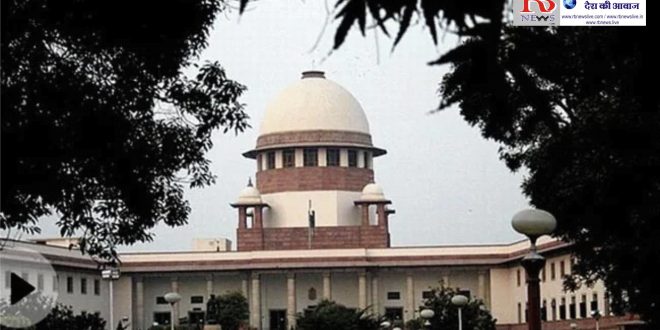A political battle has erupted in the Supreme Court over the pending Places of Worship Act. On one hand, a petition has been filed demanding the repeal of this law. On the other hand, there is a demand to implement it strongly across the country. In this regard, AIMIM MP Asaduddin Owaisi has filed a petition in the Supreme Court. Owaisi says that due to the lack of strong implementation of this law, disputes over temples and mosques are growing everywhere in the country.
This law, brought with the aim of maintaining social harmony, has been in controversy since day one. During the voting on this law in Parliament, the main opposition BJP even walked out.
What is the Places of Worship Act?
During the monsoon session in August 1991, the then PV Narasimha Rao government enacted the Places of Worship Act. According to this law, a place of worship of any religion that came into existence before 15 August 1947 cannot be converted into a place of worship of another religion. If anyone tries to do this, he can be jailed for one to three years and fined.
Due to this law, any temple-mosque dispute cannot be taken to court. However, at that time Ayodhya was kept out of this law. The Ayodhya case was in court at that time.
Why is there controversy over the law from day one?
As much controversy as there is now about the Places of Worship law, there was as much controversy when the law was brought to the Parliament. In such a situation, it is important to know why there is controversy over this bill from day one?
1. Legal process not followed in bringing the bill – When this bill was introduced in the Lok Sabha by the then Home Minister SB Chavan, MP Ram Naik from BJP opposed it. Naik said that the government introduced this bill in Parliament without following parliamentary rules.
Naik said that the government did not notify the bill before introducing it in Parliament. What fear did the government have that made it do so? At that time, BJP had given a proposal against tabling this bill. However, the speaker accepted it and allowed the debate.
The BJP said that the government has brought this bill like a money bill, which is wrong. On this, the government said that this is a financial support bill. If the government needs money for this law, then it can easily make a provision for it.
2. The problem regarding the deadline in the Worship Act – The deadline of 15 August 1947 has been given in the Worship Act. That is, the temple or mosque which was in the form in which it was at that time, will remain in the same form. It cannot be challenged.
While debating in the Lok Sabha, Ram Naik had called it a black bill of history. Naik said that why is the deadline 15 August 1947? What happened to the temples that were there before this?
At present, lawyer Ashwini Upadhyay has filed a petition in the Supreme Court against the Worship Act. According to Upadhyay, there are 900 such temples in the country which were demolished between 1192 and 1947 and their land was occupied and mosques or churches were built. 100 of these are mentioned in the Puranas.
At the time of the Ram Mandir movement, the Vishwa Hindu Parishad had released a list of places across the country where temples were demolished and mosques were built.
3. No mention of the temples that were demolished – One of the reasons for the Worship Act being controversial is that there is no mention of the temples and mosques that were demolished between 1947 and 1991. This issue was also raised during the presentation of the Worship Bill in Parliament.
At that time, Ram Vilas Paswan and Somnath Chatterjee said that what would happen to the lands of those temples and mosques that were demolished after independence and taken over by people?
The issue of states like Punjab and Haryana was raised in Parliament at that time. It was alleged that temples and other places of worship were taken over on a large scale in both these states.
Paswan also targeted the government for demolishing Buddhist sites. He said that the government does not want to take strict action in this matter.
 RB News World Latest News
RB News World Latest News






